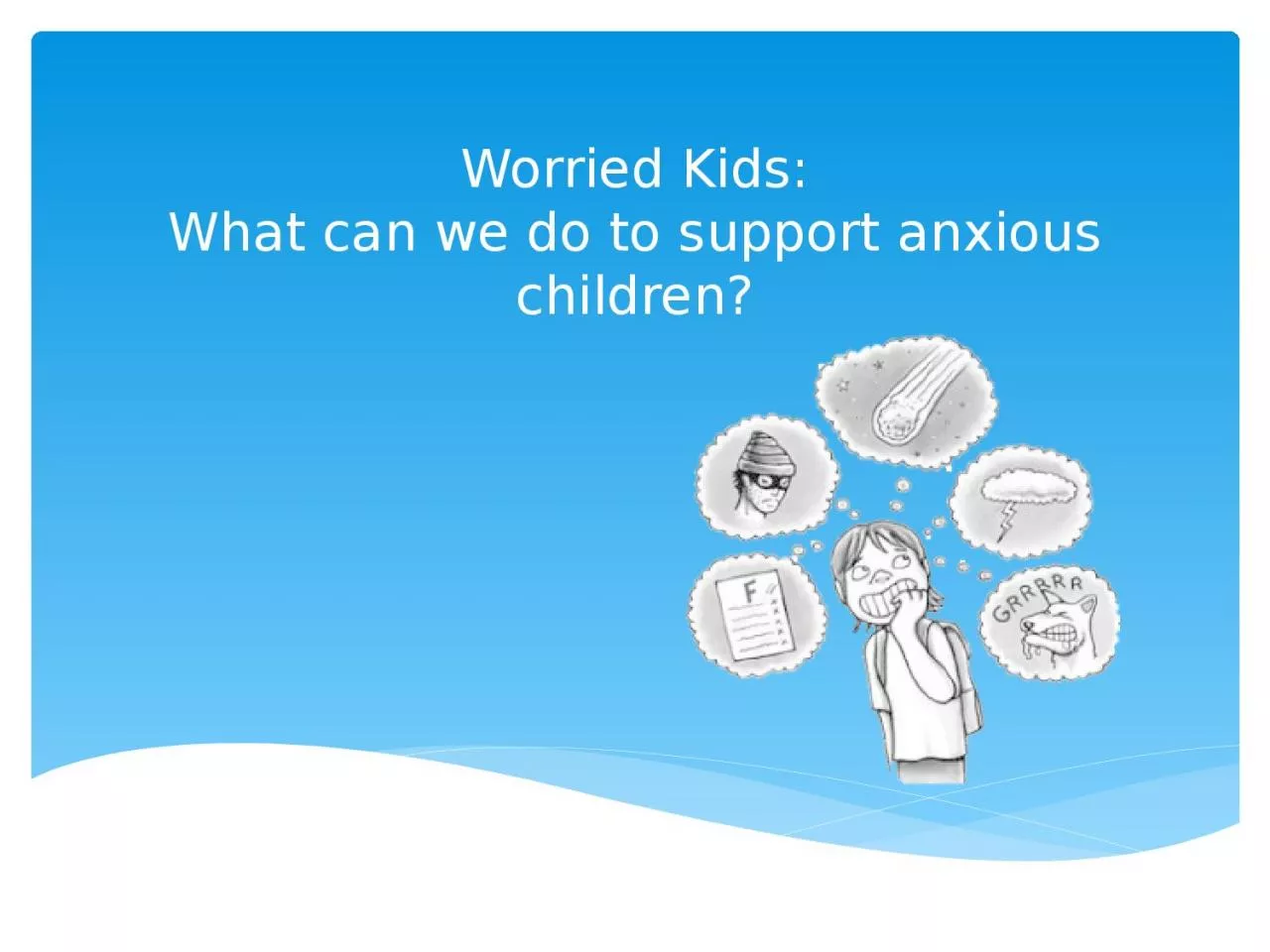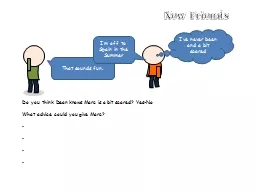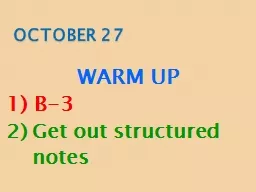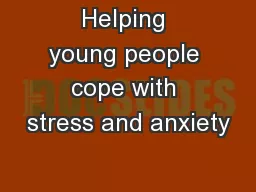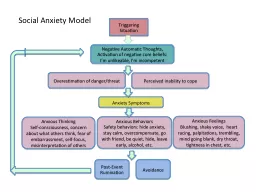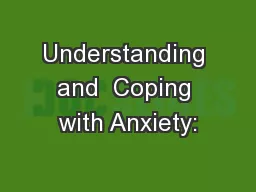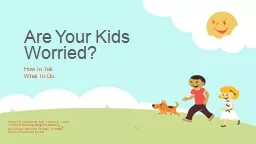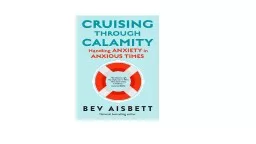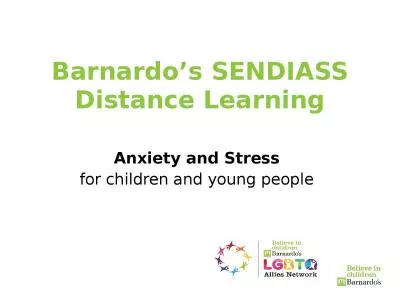PPT-Worried Kids: What can we do to support anxious children?
Author : sophie | Published Date : 2024-02-09
General anxiety Usually something that has been learned in childhood and becomes part of ones lifestyle Situational anxiety Related to a specific event or activity
Presentation Embed Code
Download Presentation
Download Presentation The PPT/PDF document "Worried Kids: What can we do to support ..." is the property of its rightful owner. Permission is granted to download and print the materials on this website for personal, non-commercial use only, and to display it on your personal computer provided you do not modify the materials and that you retain all copyright notices contained in the materials. By downloading content from our website, you accept the terms of this agreement.
Worried Kids: What can we do to support anxious children?: Transcript
General anxiety Usually something that has been learned in childhood and becomes part of ones lifestyle Situational anxiety Related to a specific event or activity Traumatic experience Physiological . Example of Megan Meier (bullying & MySpace). Is the person saying things like “I just want to end it all” or “I can’t take it anymore” or “I wish I had never been born?” Have other residents reported concern about this person’s chatter?. . . . . That sounds fun.. . . . . . . I’m off to Spain in the Summer. I’ve never been and a bit scared. New Friends. Do you think Dean knows Marc is a bit scared? Yes-No. What advice could . Emma Dolan. Gender: Male. Birthday: July 10. Occupation: none. Characteristics:. Timid. Shy. Fearful, cowardly. Anxious. Sweet. Innocent. Piglet: . Generalized Anxiety. ". Oh, d-d-d-dear! I . musn’t. WARM UP . 1) B-3. 2) Get out structured . notes. TEXT. TONE. EXPLANATION. EX. “Eris,” he said, fairly spitting her name, “has really gone too far this time. I’d hurl her down. to . Tartarus. Dr Melanie Woodfield. Clinical Psychologist. psychologymelanie@gmail.com. Welcome and Introductions. Introductions. What appealed about this seminar? What do you hope to learn?. Housekeeping. Toilets, breaks, fire exit. Triggering. Situation. Negative Automatic Thoughts, Activation of negative core . beliefs: I’m unlikeable, I’m incompetent . Overestimation of danger. /threat. Anxiety Symptoms. Post-Event. Rumination. by Jane Yolen. e. ncounter. – (n.). an unexpected or casual meeting with someone or something. “Since most stories about that first encounter are from…point of view”. h. ammock. – (n.) . About Worries?. Sometimes it seems like there are lots of things to worry about.. having friends. gym. grades. bad weather. What do YOU worry about?. What do YOU do when you are worried?. Did it work?. Some Lessons From David…. Dr. Paula Cerveny, . Registered Psychologist. Norfolk Psychological Services. May 2017- Grace Christian Fellowship. Edgy. Apprehensive. Afraid. Anxious. Losing my mind. Freaking out. Our Body and Healthy Habits. 健康. -. 孩子饮食. 话题词汇. 话题晨背 积累写作素材. 1.appetite . n. .. 食欲;胃口. 2.delicious . adj. .. 美味的;可口的. 3.fresh . adj. .. What to Do.. Cheryl. D. Goldberg, MA, LCMHCS, LCAS. Certified. Brainspotting Practitioner. Associate. Director, Therapy Services. Mood Treatment Center . What are we talking about?. Have . you ever wondered if there’s a difference between fear, worry, and anxiety? Or why your kids may ask the same question or type of question over and over? What about why they may seemingly appear fine but then suddenly they’re irritable, clingy, tearful, or don’t feel well? . They think in EXTREMES. They have fierce . INNER CRITICS. They are fearful of . MAKING MISTAKES. They worry about . how they are . PERCEIVED by. OTHERS. They are . easily . OVERWHELMED. . They don’t . AGGRESSION (FAS 5)SEVERE SIGNS - FLIGHT/FREEZE/FRET (FAS 4)ALERT/EXCITED/ANXIOUS? (FAS 0-1)PERKED/INTERESTED/ANXIOUS? (FAS 0-1) Anxiety and Stress. for children and young people. What is SENDIASS?. Bradford SENDIASS offers:. Our Role. How. the session works. . Just look at one slide at a time. Read what it says and do the activity on it (if there is one) before you go to the next slide..
Download Document
Here is the link to download the presentation.
"Worried Kids: What can we do to support anxious children?"The content belongs to its owner. You may download and print it for personal use, without modification, and keep all copyright notices. By downloading, you agree to these terms.
Related Documents

